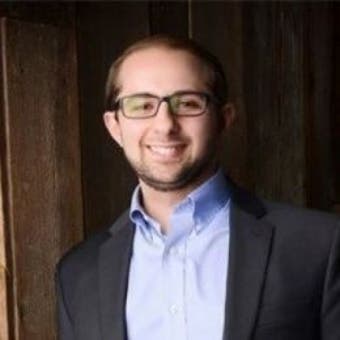Bill Bennett: No scientific reason to keep kids out of school
Former Education Secretary Bill Bennett discusses the degree of hypocrisy taking place among Democrats amid coronavirus shutdowns and weighs in on school closures.
Children throughout the U.S. are being harmed by being kept out of school in response to the coronavirus pandemic, even though the overwhelming majority don’t face a significant risk from the virus. And sadly, needless school closures are causing increases in depression, suicide, hunger and failing grades by students.
All evidence points to a need for public schools to reopen their doors to prevent children from continuing to suffer physically, psychologically and intellectually to a greater extent than at any time in memory.
Low-income students and students of color (who are disproportionately low-income) are suffering the most from being barred from classroom learning. Many of these students lack computers and Internet access to participate in schooling from their homes. Many live in overcrowded conditions that make virtual learning from home difficult.
REP. STEVE SCALISE: OPEN SCHOOLS NOW — KIDS ARE SUFFERING AND FACE LITTLE RISK FROM COVID
Evidence clearly and unequivocally shows that nearly all children attending school do not face significant risks of contracting the coronavirus. And when proper precautions are put into place, teachers also face minimal risks.
For example, in New York City — which operates the nation’s largest school system — testing conducted from Oct. 9 to Nov. 22 found the coronavirus transmission rate for students and staff in schools was just 0.28%. In some boroughs, it was even lower.
In Manhattan, the transmission rate was just 0.17% during the studied period, or only 1.7 children and staff out of 1,000.
However, that did not stop New York City Mayor Bill de Blasio from closing all public schools for the second time Nov. 18, causing significant hardship for parents and students alike, with low-income families facing the most difficult circumstances. In response to parental complaints, de Blasio reversed himself and said elementary schools would open Monday.
DE BLASIO TO REOPEN NYC SCHOOLS, SAYS HE HEARD PARENTS 'LOUD AND CLEAR'
Nor has evidence convinced the leaders of the Los Angeles Unified School District or Chicago Public Schools, the nation’s second- and third-largest school districts, to fully reopen their doors.
Depression among children has skyrocketed, in large part because of the social isolation that millions of young Americans are experiencing as a result of at-home schooling and the cancelation of extracurricular activities.
Higher levels of depression and other mental health problems have led to an increase in the suicide rate among America’s youth. A survey conducted by the Centers for Disease Control and Prevention shows 11% of all young people say they “seriously considered” committing suicide in the month prior to being surveyed.
Because low-income families are less likely to have access to important mental health services, children in these households face a higher risk than other children of succumbing to suicide and suffering from other mental illnesses.
School closure policies have also led to increases in child abuse and child hunger, because more than 30 million children rely on schools to provide free or reduced-price meals during the school week.
According to a September report by NPR, Lauren Bauer, a researcher at the Brookings Institution, has reported that Census Bureau data show only about 15% of children who rely on free and reduced-price meals are receiving the food they need now that thousands of schools serving millions of children have closed.
And these problems are just the tip of the iceberg. In addition to the psychological and physical toll that has resulted from so many schools being closed since last spring, there has also been a substantial negative impact on children’s education.
Data shows students are struggling to keep up with their academic requirements because for many of them virtual learning is vastly inferior to in-person learning.
For example, the Texas Tribune reported in late October: “Report cards from the first weeks of the school year show more students than last year failing at least one class. Students are turning in assignments late, if at all; skipping days to weeks of virtual school; and falling behind on reading, educators and parents report.”
Across the country, experts have predicted these problems will lead to increased drop-out rates at the high school level, with low-income and minority communities likely to suffer the most.
According to the Urban Institute: “Children of color have also disproportionately felt the educational effects of the pandemic, as elementary and secondary schools across the country transitioned to virtual learning. … As a result, Black and Latino students will disproportionately experience learning loss, compounding the damaging effects of policies that already leave students of color with fewer and lower-quality resources, significantly larger class sizes, less qualified and experienced teachers, and less access to high-quality curricula.”
CLICK HERE TO SIGN UP FOR OUR OPINION NEWSLETTER
On average, working-class and low-income households rely on public schools to educate and feed their children at a greater rate than middle-class and wealthy families, some of whom even have enough disposable income to hire tutors or send their children to private schools.
However, that does not mean middle-income and wealthy families haven’t been impacted by school closings. The vast majority of all families living in areas where schools have been shut are worse off for it, and the most egregious part is that there are no worthwhile public health benefits. In fact, the data shows the opposite is true.
The officials who are continuing to keep children out schools in defiance of the vast scientific evidence available and the repeated recommendations of public health experts are clearly not closing schools because it is in the best interests of children or parents. Rather, they want to appease teacher unions, which have been pushing for school closings since the start of the pandemic, no matter what the evidence has shown.
CLICK HERE TO GET THE FOX NEWS APP
It’s apparent that radical reforms to our country’s school systems are desperately needed, including a dramatic expansion of school choice programs.
When the time comes to enact those changes, we hope parents don’t soon forget that in the midst of the largest public health crisis in decades many of their local school officials and government leaders chose to play politics instead of put children first.
Chris Talgo is a research fellow at The Heartland Institute and a former South Carolina public school teacher.










































